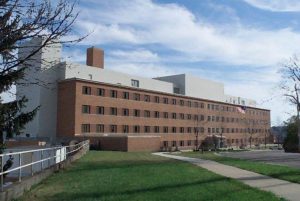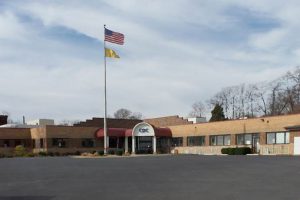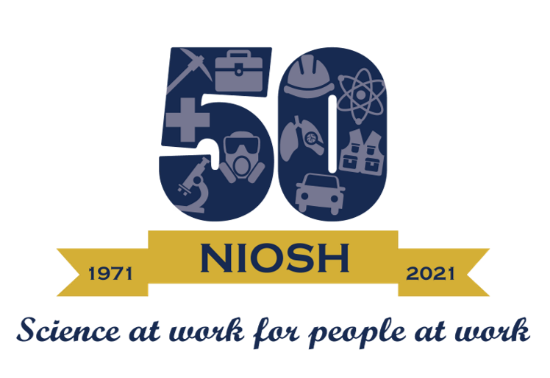NIOSH in Cincinnati – 50 Years of OSH Research and Service
Posted on by
Occupational safety and health (OSH) research has a long history in Cincinnati, Ohio that pre-dates the creation of the National Institute for Occupational Safety and Health (NIOSH) in 1971 (see related blog). Today, NIOSH has facilities across the country including two in Cincinnati —the Robert A. Taft Occupational Safety and Health Laboratory on Tusculum Avenue and what is now known as the Alice Hamilton Laboratory for Occupational Safety and Health on Ridge Avenue.

While the NIOSH Cincinnati divisions have changed over the years, the great work and dedicated employees in Cincinnati remain a constant. Today there are more than 700 NIOSH employees and contractors in Cincinnati conducting research, prevention, and service activities to protect workers.
Many of NIOSH’s noteworthy achievements have come from the dedicated scientists and staff in the Cincinnati laboratories. For example, many interventions, tools and techniques routinely used today across the U.S. to prevent work-related injuries and illnesses, from analytical, exposure assessment, and epidemiologic methods to risk assessment principles and engineering solutions, were developed or significantly enhanced in the Cincinnati laboratories.
Thanks in large part to NIOSH research conducted in Cincinnati, scientists and policymakers have been better able to address the complex, emerging safety and health issues of the modern economy and future of work. These include work-related stress and fatigue, occupational health equities, nanotechnology and emerging technologies, healthy work design and well-being, indoor environmental quality, occupational heat stress, and emergency preparedness. Cincinnati is a hub for NIOSH’s customer outreach services providing a wealth of OSH information and experience to safety and health professionals, employers, workers and the general public. In our activities over the years, we have formed close professional and personal ties in the local community. Yet technology allows for unprecedented collaboration and communication throughout NIOSH, across the United States, and worldwide. Under the National Occupational Research Agenda (NORA) and Research-to-Practice (r2p) frameworks, the laboratories continue to promote collaborative, results-oriented research and communication products.
There are currently three NIOSH Divisions based in Cincinnati. Cincinnati employees also work in other NIOSH Divisions, Labs and Offices (DLOs) including the Health Effects Laboratory Division, World Trade Center Health Program, and the Office of the Deputy Director for Management.
The Division of Science Integration (DSI) uses a public health approach to develop and transfer information and provide recommendations to prevent occupational deaths, injuries, and illnesses. It brings together diverse streams of research to develop guidance and other publications for employees, workers, and other authorities. The division:
- Develops and disseminates targeted occupational safety and health information for employers and workers. An example includes a recent Workplace Solutions document providing information about conducting a thorough daily inspection of powered industrial trucks (PITs) to reduce the likelihood of worker injuries during the use of PITs.
- Conducts research on the effectiveness of scientific products (such as OSH training and educational materials) to produce positive OSH outcomes and the strategies needed to implement and sustain OSH training and educational materials in community settings (such as schools and worksites). One example includes Talking Safety – Youth at Work – a foundational OSH curriculum for middle school and high school students.
- Develops qualitative and quantitative risk assessments. NIOSH has a three-step process for conducting occupational risk assessments: identifying the hazard, assessing the exposure-response relationship and characterizing the workplace risk. See NIOSH Practices in Occupational Risk Assessment. An example of a publication resulting from occupational risk assessment is Health Effects of Occupational Exposure to Silver Nanomaterials.
- Develops policy and technical documents (Nanotechnology Research and Guidance Strategic Plan, NIOSH Pocket Guide to Chemical Hazards and app, Occupational Exposure Banding).
- Conducts translation research to evaluate the effectiveness of occupational safety and health programs.
- Produces and maintains NIOSH publications and other products and, through the Docket Office, supports a repository of NIOSH policy products such as Federal Register notices, policy responses, and testimony.
- Conducts research on how work is organized and the implications for health, productivity, and prevention – The Quality of Worklife Questionnaire is a tool to help measure trends in work organization and stress, and how those experiences relate to worker well-being over time.
- Hosts a number of centers and programs, including the Occupational Health Equity Program and the Center for Work and Fatigue Research.
The Division of Field Studies and Engineering (DFSE) seeks to prevent work-related illness through multidisciplinary programs including worksite evaluations, surveillance, research, and the development of engineering controls and interventions. DFSE has four main research areas:
- Using occupational health surveillance and informatics methods to study trends in worker exposures, illnesses, and injuries. This includes:
-
- Developing worker illness, injury, and hazard tracking systems and informatics tools such as: Worker Health Charts, The NIOSH Industry & Occupation Computerized Coding System (NIOCCS), and Adult Blood Lead Epidemiology and Surveillance (ABLES).
- Promoting and supporting industry and occupation information collection in surveys and records.
- Characterizing and reducing workplace health hazards for workplaces, agencies, and other stakeholders including:
-
- Evaluating fire fighters’ work-related deaths caused by medical conditions.
- Conducting Health Hazard Evaluations of potential workplace safety and health issues at the request of workers, employers, or their union representatives.
- Conducting assessments of occupational exposure to nanomaterials and advanced materials.
- Conducting health and exposure field research in working populations such as:
-
- Determining the incidence and prevalence of disease in workers and their children.
- Determining the nature and extent of acute and chronic responses to potentially hazardous agents at work.
- Conducting research to characterize and control worker exposures to hazards including:
-
- Developing and evaluating engineering controls to reduce workplace exposures to hazards (i.e. Silica/Asphalt Milling, mini-baghouse, fiber-cement siding) .
- Preventing and reducing the occurrence of occupational hearing loss and musculoskeletal disorders.
DFSE is home to a number of centers and programs, including the National Firefighter Registry and the Center for Workers’ Compensation Studies. DFSE staff also often participate in disaster and emergency response activities.
The Division of Compensation Analysis and Support (DCAS) provides scientific support for claims involving workers with cancer due to radiation exposure. Since World War II, many workers have taken part in nuclear weapons-related activities for the Department of Energy, its contractors and subcontractors, and atomic weapons employers. Many jobs at sites involved in these activities worked with radiation and radioactive materials. The Energy Employees Occupational Illness Compensation Program Act (the Act) of 2000, enables current and former workers in the nation’s nuclear weapons program, or their survivors, to file claims for compensation if they believe they have an illness due to workplace exposures to hazardous substances or radiation. DCAS is primarily responsible for estimating work–related radiation exposure (dose reconstruction) for certain workers with cancer who filed claims under Part B of the Act. Part B is a portion of the Act that provides compensation and medical benefits to employees (or their survivors) for illness caused by exposure to radiation, beryllium, and silica during their employment at DOE, its contractor, or subcontractor facilities.
We are proud of our past in NIOSH Cincinnati and the future is bright. We remain committed to conducting research, prevention, and service activities to protect America’s workers.
Trudi McCleery, MPH, is a Health Communications Specialist in the NIOSH Division of Science Integration, Science Applications Branch.
Julie Tisdale-Pardi, MA, is the NIOSH Science Blog Coordinator.
 See related blogs:
See related blogs:
NIOSH in Cincinnati-A Pictorial History Part I
NIOSH in Cincinnati – A Pictorial History, Part II
This blog is part of a series for the NIOSH 50th Anniversary. Stay up to date on how we’re celebrating NIOSH’s 50th Anniversary on our website.
Posted on by

